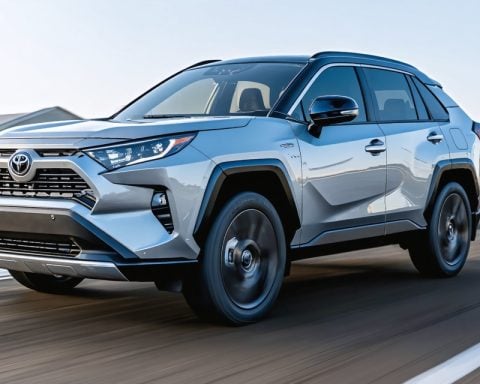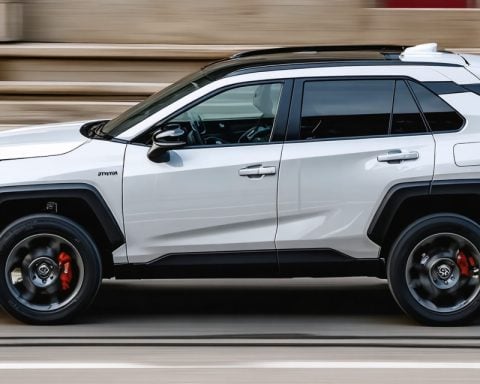- Tesla has faced its first-ever decline in electric vehicle sales, raising concerns among investors.
- In its latest earnings report, over half of the reported net income came from cryptocurrency profits and EV credit sales, not core automotive sales.
- Consumer sentiment is wavering, with nearly two-thirds of potential buyers hesitant to purchase a Tesla.
- Intensifying competition from new EV brands is threatening Tesla’s market dominance.
- To regain investor confidence and market position, Tesla must enhance product quality and focus on customer satisfaction.
- The company’s future survival in the EV market depends on its ability to innovate and adapt to changing conditions.
Tesla, the trailblazer of electric vehicles, is facing an unprecedented challenge as it reports its first-ever decline in EV sales, sending ripples of concern among investors and analysts. While the charismatic CEO Elon Musk dazzles the public with visions of self-driving taxis and humanoid robots, the company grapples with unsettling financial realities.
In its latest earnings report, Tesla revealed a staggering $2.3 billion net income. However, over half of this figure was propped up by volatile cryptocurrency profits and EV credit sales, casting a shadow over its core automotive business. This precarious financial footing has sparked unease among shareholders, many of whom worry about Musk’s leadership style and the absence of a clear operational strategy.
Consumer sentiment is shifting dramatically; nearly two-thirds of potential buyers now express hesitance towards purchasing a Tesla. This rising reluctance coincides with fierce competition from emerging EV brands, threatening Tesla’s once-unassailable market position.
As the electric vehicle landscape evolves, Tesla finds itself at a crucial crossroads. With investor confidence waning and market competition heating up, the future of Tesla rests on more than just its ambitious promises. To reclaim its former glory, the company must tighten its focus on product quality, customer satisfaction, and innovative strategies.
Key Takeaway: Tesla’s survival in the cutthroat EV market hinges on its ability to adapt swiftly, invest in its core products, and restore consumer confidence. Buckle up; the road ahead may be bumpy!
Is Tesla’s Future in Jeopardy? Unpacking the Challenges Ahead
Tesla, once the undisputed leader in the electric vehicle (EV) market, now faces a mix of challenges that could shape its future significantly. Recent reports indicate a decline in EV sales for the first time, raising eyebrows about the company’s long-term sustainability. As the industry dynamics shift, let’s explore key aspects that might influence Tesla’s trajectory.
Key Features of Tesla’s Current Situation
– Financial Foundations: While Tesla reported a net income of $2.3 billion, over 50% stemmed from cryptocurrency and EV credits rather than core automotive sales. This indicates a potential fragility in their traditional revenue sources.
– Consumer Sentiment: Recent studies show that 63% of potential buyers are hesitant about choosing a Tesla, partly due to growing competition and concerns about product quality.
– Competition Trends: Companies like Rivian and Lucid Motors are emerging with competitive products that claim superior technology and features, putting additional pressure on Tesla.
Use Cases and Innovations
As Tesla continues to innovate, focusing on areas such as autonomous driving, energy solutions, and product diversification is crucial. Innovations in battery technology and solar energy integration could prove pivotal in maintaining interest and market share.
Limitations and Controversies
– Leadership Concerns: Investor confidence is shaky due to Elon Musk’s leadership style and public statements, which sometimes lack clarity regarding the company’s operational strategies.
– Product Quality Issues: Customer feedback has pointed towards quality concerns with production and service, leading to a deteriorating brand reputation that Tesla must address.
Market Analysis and Predictions
Analysts predict that if Tesla does not realign its strategies, it might experience a significant market share loss within the next few years. They may need to innovate and streamline operations more aggressively to compete effectively.
Pros and Cons of Tesla’s Situation
Pros:
1. Strong brand recognition and loyalty.
2. Early mover advantage in EV markets.
3. A vast supercharging network.
Cons:
1. Decreasing consumer confidence.
2. Emerging competitors with innovative offerings.
3. Dependence on non-automotive revenue streams.
Pricing Trends
With the increasing competition, Tesla may need to reconsider its pricing strategies. Offering competitive pricing without sacrificing quality will be key to attracting the hesitant consumers.
Related Questions
1. What are Tesla’s main obstacles in the current market landscape?
Tesla faces increased competition, deteriorating consumer trust, and reliance on non-automotive income sources, which all point toward a need for strategic realignment.
2. How can Tesla regain consumer confidence?
By focusing on improving product quality, enhancing customer service, and delivering on its ambitious promises of innovation, Tesla can work towards rebuilding trust with potential buyers.
3. What future innovations could define Tesla’s path forward?
Innovations in battery technology, self-driving capabilities, and an enhanced product lineup involving lower-cost models could pave the way for Tesla’s resurgence in the EV market.
For further insights on Tesla and the electric vehicle market, visit Tesla’s official page.













